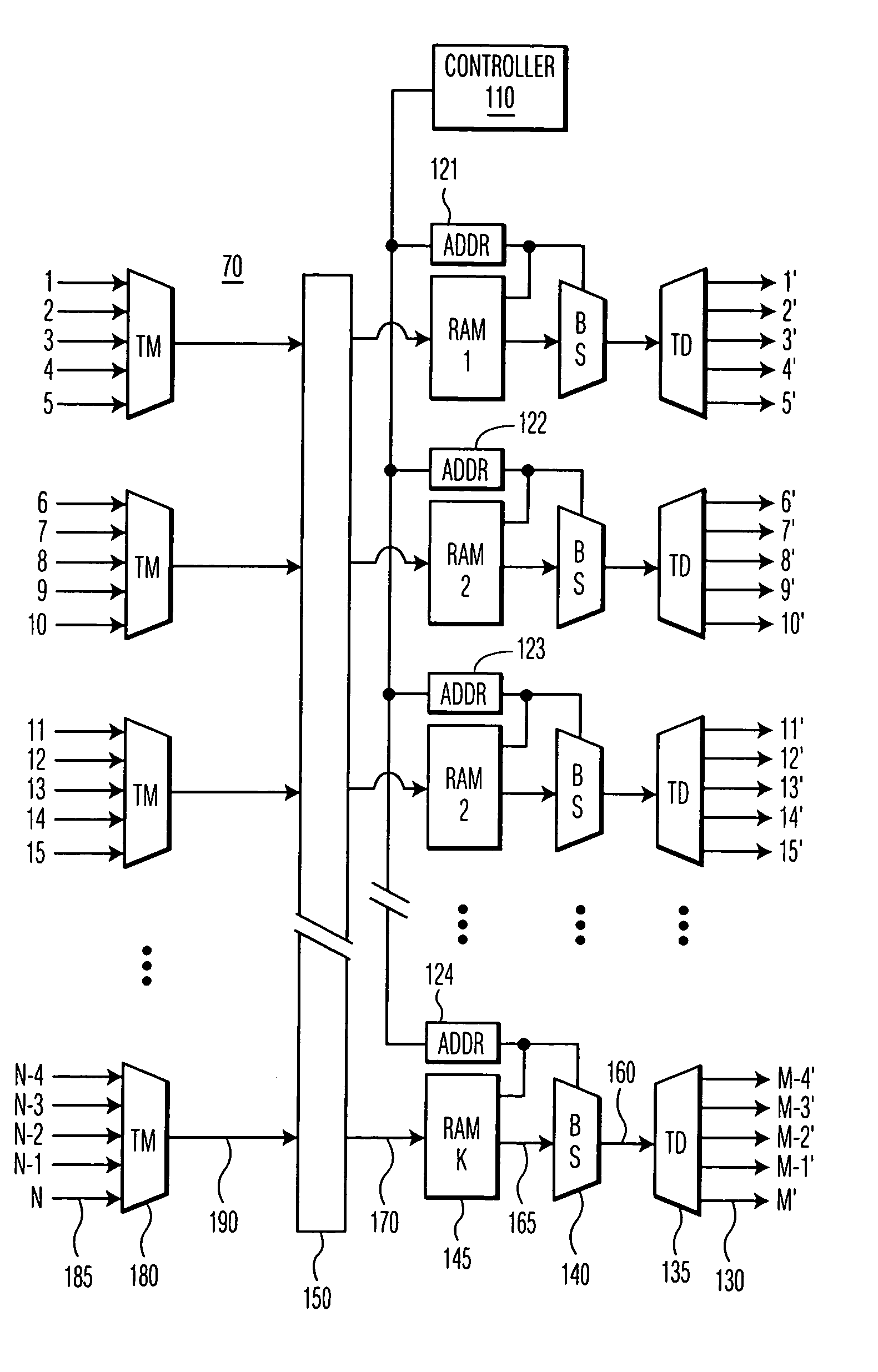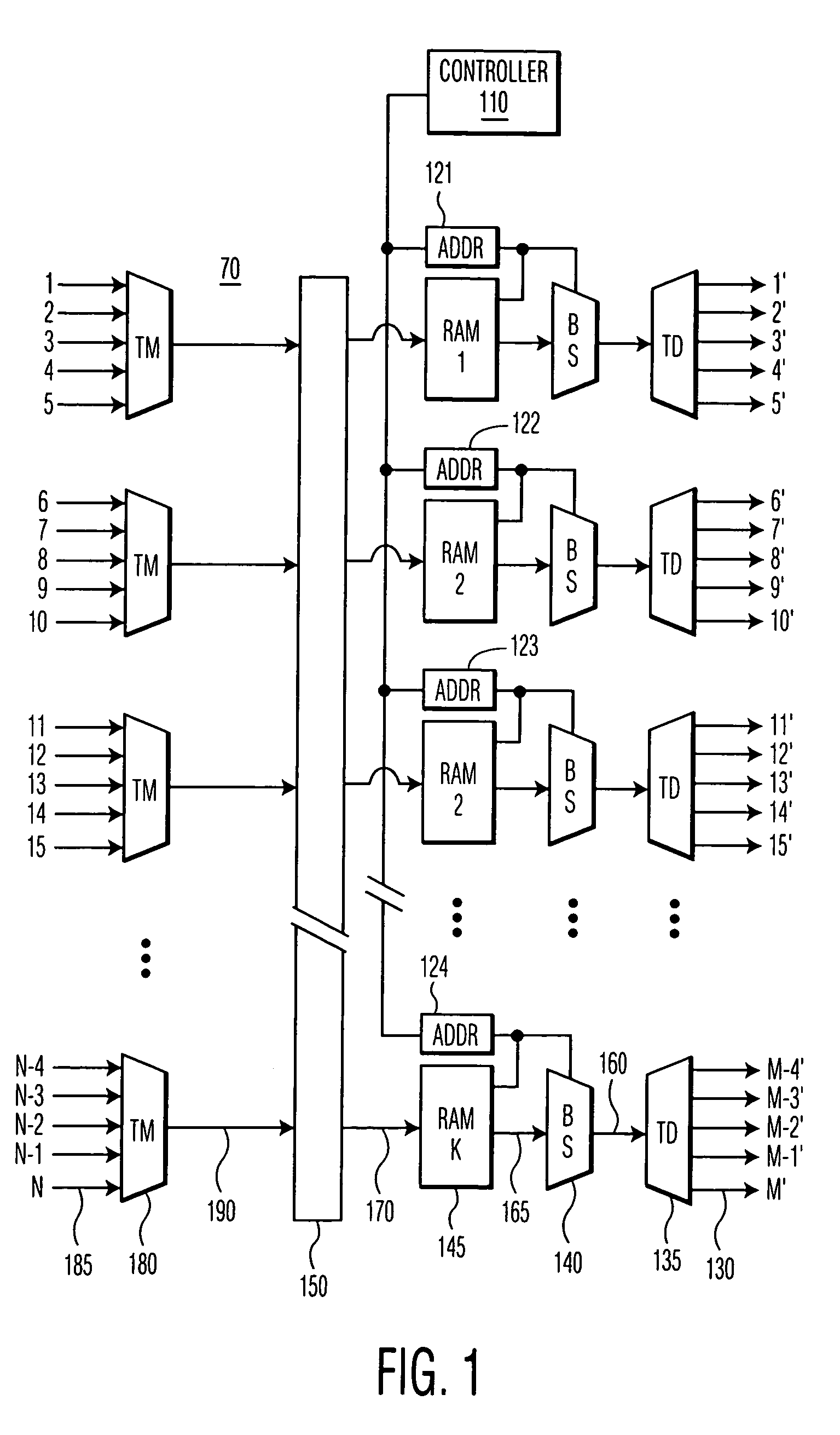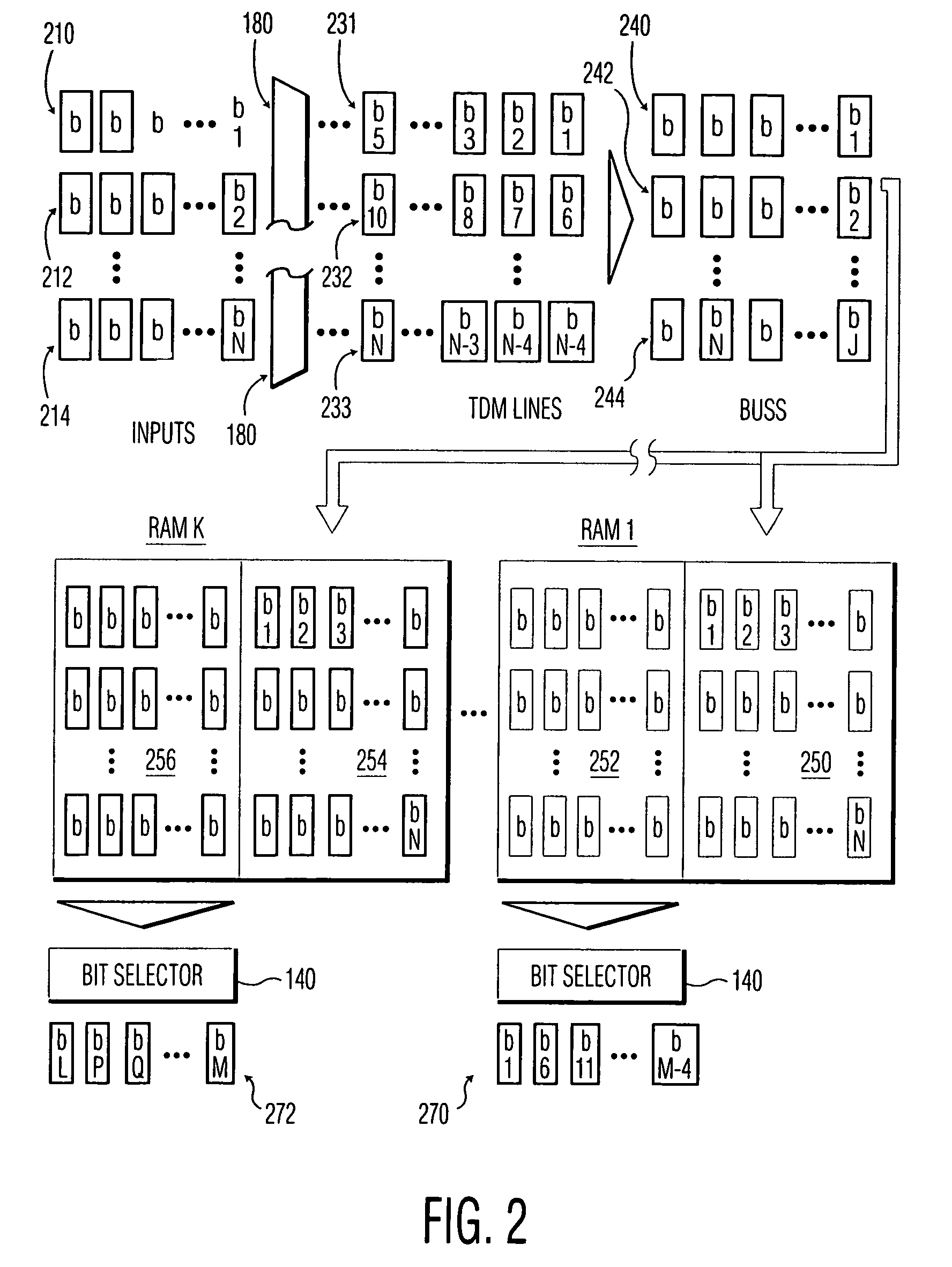Technique for creating a machine to route non-packetized digital signals using distributed RAM
a distributed ram and digital signal technology, applied in the field of non-packetized digital signal routing or switching system, can solve the problem of limited frequency demands on the devices driving the receiving and output electronics, and achieve the effect of high speed
- Summary
- Abstract
- Description
- Claims
- Application Information
AI Technical Summary
Benefits of technology
Problems solved by technology
Method used
Image
Examples
Embodiment Construction
[0010]Referring to FIG. 1, signals on separate physical channels 185 arrive at respective time multiplexers 180 of a switch 70 (generically, a signal transducer). The multiplexers 180 multiplex the several separate signals arriving on the respective physical channels 185 and output them on respective channels 190. The channels 190 may be applied to a buss 150 and read simultaneously into each of several random access memories (RAMs) 145. The RAMs 145 are simultaneously imaged with data from the buss 150 in blocks of arbitrary size, in an embodiment, each block containing one bit from each physical channel 185. As a block is being written, another block is being read. The blocks may correspond to arbitrary areas of memory and reused so that the writing and reading operations over a given block alternate.
[0011]Each RAM 145 is read out by a respective addressing controller 121–124 controlled by a controller 110. As would be understood by a person of ordinary skill, the addressing contr...
PUM
 Login to View More
Login to View More Abstract
Description
Claims
Application Information
 Login to View More
Login to View More - R&D
- Intellectual Property
- Life Sciences
- Materials
- Tech Scout
- Unparalleled Data Quality
- Higher Quality Content
- 60% Fewer Hallucinations
Browse by: Latest US Patents, China's latest patents, Technical Efficacy Thesaurus, Application Domain, Technology Topic, Popular Technical Reports.
© 2025 PatSnap. All rights reserved.Legal|Privacy policy|Modern Slavery Act Transparency Statement|Sitemap|About US| Contact US: help@patsnap.com



